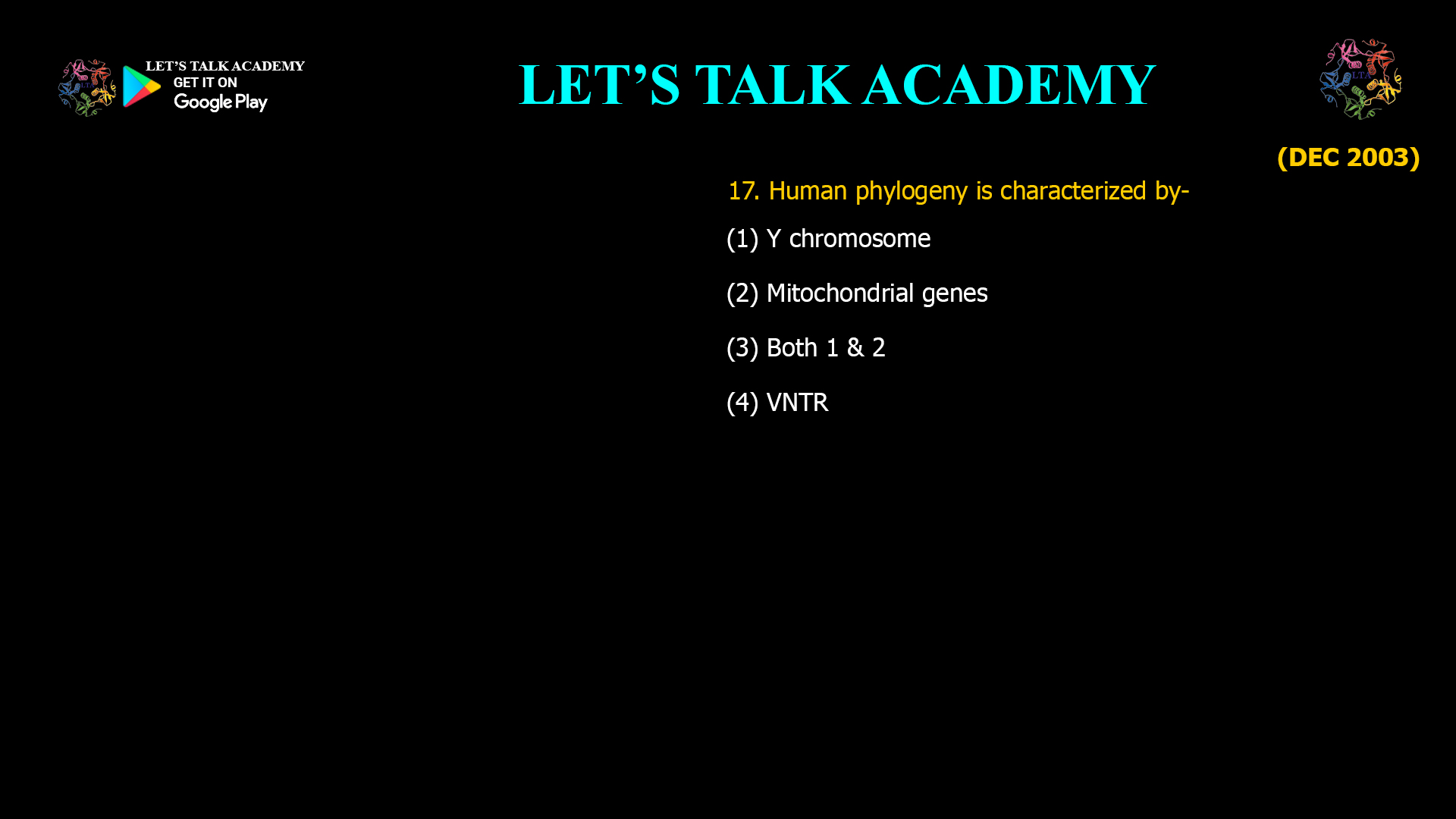- Human phylogeny is characterized by-
(1) Y chromosome (2) Mitochondrial genes
(3) Both 1 & 2 (4) VNTRHuman Phylogeny: The Role of Y Chromosome and Mitochondrial Genes in Tracing Ancestry
Understanding human evolution and ancestry requires precise genetic markers that can be traced across generations. Two of the most powerful tools for reconstructing human phylogeny are the Y chromosome and mitochondrial genes. These genetic elements have unique inheritance patterns and provide complementary insights into our evolutionary history.
Why the Y Chromosome and Mitochondrial Genes?
-
Y Chromosome:
The Y chromosome is passed exclusively from father to son. It does not recombine with other chromosomes except for small regions, making it a stable marker for tracing paternal lineages over thousands of years. Y-chromosome DNA haplogroups are defined by specific mutations and are used to map out major branches of the human family tree, including the identification of the Y-chromosomal most recent common ancestor (Y-MRCA), sometimes referred to as “Y-chromosomal Adam” 34. -
Mitochondrial Genes:
Mitochondrial DNA (mtDNA) is inherited only from the mother. Like the Y chromosome, it is haploid and does not undergo recombination, making it ideal for tracking maternal lineages. Mitochondrial DNA has been instrumental in identifying the “mitochondrial Eve,” the most recent woman from whom all living humans descend matrilineally. Both mtDNA and the Y chromosome accumulate mutations at a relatively constant rate, providing a molecular clock for estimating divergence times among populations 45.
Complementary Insights
Using both the Y chromosome and mitochondrial genes allows scientists to reconstruct both the paternal and maternal branches of human ancestry. This dual approach provides a more complete picture of human migration, population bottlenecks, and evolutionary events 45.
Notable Findings
-
Genetic differences between human populations are often larger for the Y chromosome than for mitochondrial DNA, reflecting different patterns of inheritance and social structure 16.
-
Both markers have been used extensively in molecular anthropology and population genetics to resolve questions about human origins, migration, and diversity 45.
Why Not VNTR?
While Variable Number Tandem Repeats (VNTRs) are useful for forensic identification and studying genetic diversity within populations, they are less stable over long evolutionary timescales and are not the primary markers used for reconstructing deep phylogenetic relationships.
Conclusion
Human phylogeny is best characterized by both the Y chromosome and mitochondrial genes. These markers provide robust, complementary data for tracing our evolutionary history, making them indispensable tools in the study of human ancestry.
Correct answer:
(3) Both 1 & 2 (Y chromosome and mitochondrial genes) -



